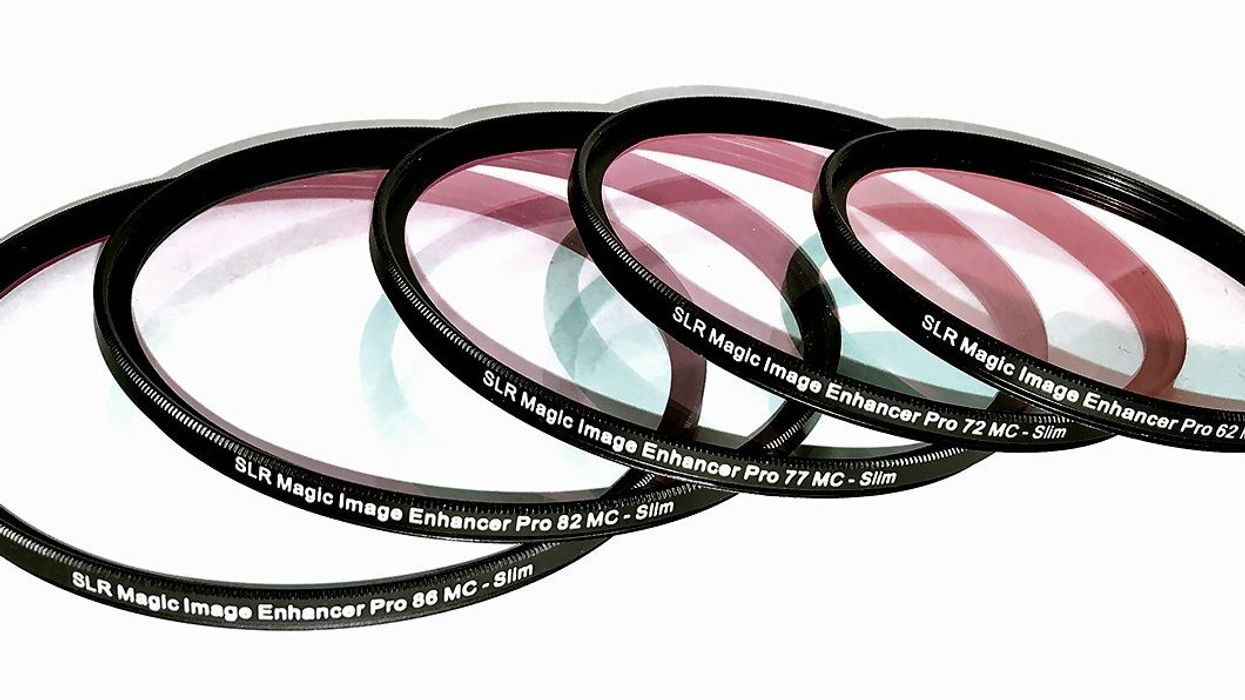New SLR Magic Image Enhancer Filter Can Improve Your Skin
SLR Magic released its latest product, the Image Enhancer Pro filter that is targeted at cutting light more evenly across the spectral range.

Digital sensors see outside the range of human vision—with especially big problems seeing into the infrared spectrum in ways that humans can't, resulting in unwanted distortion. While you might want to use this for a specific effect, it's much more likely that the extra info in the IR spectrum is showing up in your images in unpleasantly lifted blacks, sometimes with a color cast, provided by fabrics that look pleasant on set but reflect more IR than the eye can see. This problem is typically exacerbated by traditional ND filters, which usually lower the visible spectrum more than the IR spectrum, leaving you with even more ND issues.
In the age of digital color grading, why does this matter? Can't you just pull a key and correct the skin tone?
This problem led to the proliferation of "hot mirror" ND filters. As digital cinema took off, it became increasingly important to be sure that your ND filters also blocked—or mirrored back to the scene, away from the sensor—the "hot," or infrared, light. The best of these filters are very expensive; it requires complex engineering to create a filter that evenly blocks the visible spectrum while also knocking out unwanted UV and IR.
Into this fray comes SLR Magic, a wonderful company consistently making quality products at very reasonable price points. Its new Image Enhancer is the result of extensive engineering and research (with more than 50 optical coatings on the filter!) to produce a pleasant even pass through of the visible spectrum while diminishing IR and UV greatly.

As you can see in the above curves released by SLR Magic, the response curve—through particularly the flesh tone area's of visible life—is quite consistent. When you look at the rough edges and "combing" of the top right filter reproduction, you are seeing the inconsistent response of the filter, allowing more or less light through in a way that will affect color reproduction.
Of course, this is "brand-x" from SLR Magic marketing, so we don't know precisely which filter they are discussing in comparison and how bad it really is. However, early tests seem promising. The real test will be, as always, to test it yourself and see if you like the way in which the filter "enhances" color.
The filter is designed to be easy to integrate with ND and variable ND filters.
In the age of digital color grading, why does this matter? Can't you just pull a key and correct the skin tone to anything you like? If that were true, nobody would care about the characteristics of a camera at all. When you grade an image, the quality of the starting image matters quite a bit. Especially with something as important as actors' flesh tones, throwing your spectrum off when you capture can make it much more complicated to get a good-looking skin tone in your final grade. Additionally, you don't always have a lot of time in the grading suite, and the more you can do in camera, the less time you have to spend in post, so you can concentrate on other areas of the grade.
The filter is designed to be easy to integrate with ND and variable ND filters, and to work especially well with SLR Magic's variable ND filters. It will be available this fall.
Tech specs
- 50 optical coating layers
- 86, 82, 77, 72, 62 filter threads
- Even spectral response across the visible spectrum
- IR blocking doesn't cut into visible red light
- Reduces red cast in some variable ND filters












